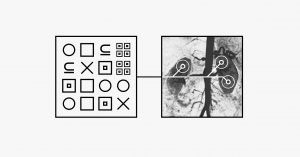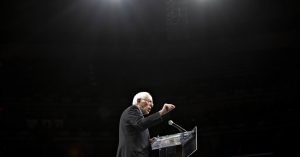Greta Thunberg’s face is all over the internet—she scowls, she stares, she snarls, she poses with Arnold Schwartzenegger. To some, the 16-year-old Swedish climate activist, who this week gave an impassioned speech demanding action from world leaders at the United Nations, is a messiah with a side braid. To others, particularly those working at conservative-leaning media outlets that tend to downplay the mounting impacts of climate change, she’s a Nazi-propaganda communist actress with a mental illness and connections to Jewish billionaire George Soros … or is it ISIS … or is it an “antifascist terrorist organization”?
None of that is true, of course. (Thunberg does support antifascism, but that’s an ideology, not a terrorist group.) Thunberg is neither messiah nor Maoist monster. She’s evidence of a changing culture of digital activism, one that’s skewing younger and younger every time adult-run institutions get stuck in political gridlock. As President Trump has discovered, septuagenarians are no match for Gen Z on social media. They’ll just take your attempted insults and make them their Twitter bio.
In general, kids start waving signs when adults are slow to act, and, according to Alcides Velasquez, who researches social media and political activism and participation at the University of Kansas, there is a perception among adults that children will be more effective at trumpeting future-looking messages. (Also, as political commentator Tucker Carlson pointed out, it’s harder to justify eviscerating a child for political gain.) That’s only the most cynical piece of Thunberg’s appeal, though. “We learn from observing people who are similar to us,” he says. “If you want young people to get involved, showing them that another teenager can do this type of stuff will be very empowering.” He also notes that youth demonstrations, like the climate marches Thunberg and others have led, put direct pressure on re-election minded public officials: “They’re going to be voting in three, four, five years, and politicians will be feeling the pressure.”
To youth activism experts, 2019 looks a lot like the 1960s: young people trying to get the government to pay attention to issues they’d rather ignore, whether it’s the Jim Crow culture of violence or rapidly rising sea levels. “What’s interesting about now, and the ’60s, is that they’re coming with policy goals and engaging with elected officials,” says Ellen Middaugh, who researches digital media and youth civic engagement at UC Riverside’s Civic Engagement Research Group. “In the ’90s, it was always about opting out of electoral politics, and participating in high-profile boycotts of Nike or the World Trade Organization.” Not so coincidentally, the 1960s and now are united by a sudden, widespread access to information. Activism in the 1960s, some argue, was defined by the photograph, like John Paul Filo’s image from the Kent State Shootings. The unit of activism today is probably the tweet.
Thunberg is great at Twitter, and she makes faces that beg to be memed, but so do lots of people. Middaugh and Velasquez both think that Thunberg is building off the toolkit adopted by the teenage survivors of the Parkland school shooting, but with a few key advantages. “Parkland students were very successful in the US, but in places like China, Japan, and the rest of the world people weren’t really paying attention,” Velasquez says. “She has a much larger platform because she’s talking about a global phenomenon.” Like the Parkland students—notably Emma González and David Hogg—Thunberg excels at using her personality to humanize a complex political issue, and, as Middaugh puts it, “clapping back at critics.” “They share this ability to use participatory, social media activism methods while also interfacing with public officials,” she says. “The Parkland kids went to the White House. She’s talking to the UN. That is really different than past youth activists rejecting institutions entirely.”
A fair question—or really, criticism—is why Thunberg and the Parkland students have been able to get media attention and invitations from powerful organizations and institutions when other children doing very similar work have not. Middaugh points out that 12-year-old water crisis activist Amariyanna Copeny, alias Little Miss Flint, shares their savvy but not their notoriety among political leaders. Autumn Peltier, a 15-year-old Canadian environmental activist, who is Anishinaabe-kwe and a member of the Wikwemikong First Nation, has been doing similar work to Thunberg’s for years and will soon be making her second address to the UN, lacks Thunberg’s meme machine. Some of that comes down to the regional specificity issue Velasquez mentioned, but not all of it.
“A critique I think is justified is that white, middle-class kids are getting the most attention,” Middaugh says. “In Thunberg, you have a photogenic, passionate young girl who looks like what many people think young leaders look like. Activists representing marginalized groups have much bigger barriers to overcome to get people’s attention.”



